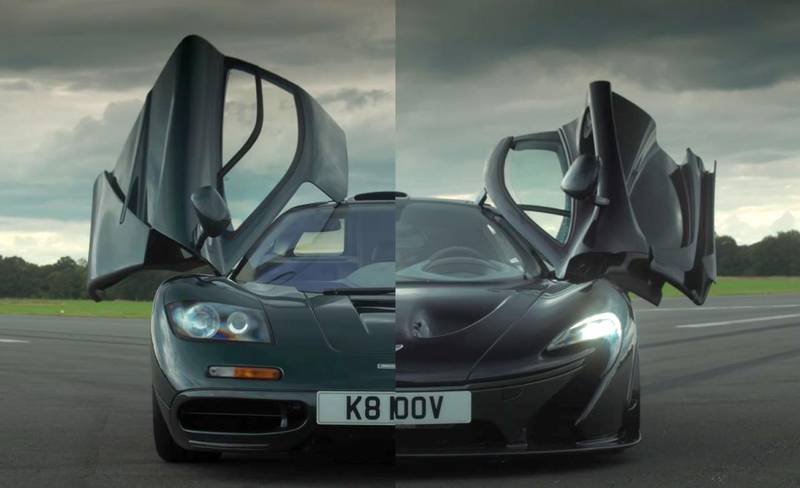McLaren’s commitment to pushing the boundaries of automotive design and performance has solidified its place as one of the foremost luxury sports car manufacturers in the world. With the release of the first design sketch of the new McLaren W1, enthusiasts and industry experts alike are buzzing with anticipation. The W1 represents a significant step forward for McLaren, showcasing cutting-edge design, engineering innovation, and a radical approach to redefining the modern hypercar. In this critical analysis, we’ll delve into the freshly revealed sketch and explore what it tells us about the upcoming model’s visual identity, technological advancements, and potential impact on the automotive industry.
The Design Language of the McLaren W1: A New Chapter
The design sketch of the McLaren W1 exudes a level of artistry and finesse that makes a strong first impression. The contours of the vehicle are sculpted with a sense of precision and fluidity that not only speaks to McLaren’s design ethos but also suggests an evolution in their aesthetic language. Where previous models like the McLaren P1 and Senna displayed an aggressive and almost alien-like aesthetic, the W1 appears to be rooted in a more organic form, suggesting a harmonious balance between nature and technology.
One of the most striking elements in the sketch is the silhouette of the W1. The low-slung body, with its elongated curves and sweeping lines, creates a sense of speed and motion even when stationary. This kinetic energy in the design is further emphasized by the deep side sculpting, which seems to draw the eye toward the rear, where an exaggerated diffuser and sculpted tail highlight its aerodynamic focus. This progression in the design language signifies a departure from the sharp angularity of previous models and an embrace of smoother transitions and flowing forms.
Aerodynamics: Form Follows Function
McLaren has always been known for its emphasis on aerodynamics, and the W1 appears to be no exception. The sketch reveals a vehicle that has been meticulously crafted with air flow in mind. The front fascia, with its gaping intakes and razor-thin headlamps, is a nod to the brand’s racing heritage. These features aren’t just for show; they suggest active aerodynamic components that can dynamically adapt to driving conditions, optimizing downforce and reducing drag as needed.
The roofline of the W1 transitions seamlessly into a prominent rear wing, which appears to be fully integrated into the car’s chassis. This integration of aerodynamic elements hints at a philosophy where every surface and component serves a dual purpose — aesthetic and functional. Moreover, the use of negative space within the design — visible in the skeletal structures around the rear — could indicate a lightweight construction that utilizes advanced materials like carbon fiber and titanium.
Technological Innovation: Redefining the Driving Experience
While the sketch doesn’t provide direct insights into the technological underpinnings of the W1, it’s clear that McLaren’s engineers have prioritized the integration of cutting-edge technologies. Speculation suggests that the W1 will feature an enhanced hybrid powertrain, building upon the learnings from the McLaren P1’s groundbreaking KERS system. This powertrain could combine a high-revving V8 with an electric motor, providing instantaneous torque and unprecedented acceleration capabilities.
The sketch’s emphasis on a low center of gravity hints at McLaren’s focus on handling dynamics. Expect features such as active suspension systems that can adapt to road conditions in real-time, ensuring that the W1 delivers a level of control and agility that surpasses even McLaren’s own standards. Additionally, advancements in weight distribution and chassis stiffness could contribute to a more engaging and visceral driving experience.
Front Fascia
The front of the W1 is dominated by an aggressive, low-slung nose that seems poised to slice through the air. The grille design, while not fully revealed, suggests a more complex structure that likely incorporates active shutters for cooling and aerodynamics. The headlamps, reduced to slim LED strips, provide a futuristic touch, serving both as a functional light source and a design statement.
Side Profile
The side profile of the W1 is where the design truly comes alive. The deep channels and pronounced side skirts hint at an active aerodynamic system that channels air toward the rear diffuser. The large, muscular rear haunches house substantial intakes that likely feed cool air to a mid-mounted engine, a hallmark of McLaren’s performance cars. The flowing lines suggest that McLaren is experimenting with new forms of body sculpting, possibly using 3D printing and other advanced manufacturing techniques to achieve previously impossible shapes.
Rear Design
The rear of the W1, as depicted in the sketch, is perhaps the most radical aspect of the design. The expansive diffuser, integrated wing, and skeletal rear fascia create a look that’s simultaneously futuristic and aggressive. This design suggests that McLaren is prioritizing downforce and stability at high speeds, ensuring that the W1 remains planted during extreme maneuvers. The tail lights, likely to be thin, horizontal strips, add to the sense of width and presence, further emphasizing the car’s performance-oriented nature.
Engineering Marvel: A Look Under the Hood
While the sketch only provides a visual representation, it’s worth considering the engineering marvel that the W1 is likely to become. Given McLaren’s history of innovation, the W1 will undoubtedly feature a hybridized powertrain that leverages electric motors to boost performance. It’s plausible that McLaren could opt for a twin-turbocharged V8, similar to the one used in the 720S, paired with an electric motor system that would push total power output well beyond 1,000 horsepower.
The chassis will likely be a bespoke carbon fiber monocoque, designed to maximize rigidity while minimizing weight. Active aerodynamics, variable torque vectoring, and rear-wheel steering are all expected features, ensuring that the W1 delivers a driving experience that is both exhilarating and confidence-inspiring.
Interior: A Glimpse into the Future?
While the interior hasn’t been revealed, it’s safe to assume that McLaren will continue its tradition of driver-focused cabins. Expect a minimalist yet high-tech interior, with digital displays that provide critical information in a clear and concise manner. The use of premium materials like Alcantara, carbon fiber, and anodized aluminum will create an environment that is both luxurious and purposeful.
Advanced driver assistance systems (ADAS) and connectivity features are likely to be included, making the W1 not just a track beast but also a car that can be comfortably driven on public roads. The steering wheel, inspired by Formula 1 designs, will probably house controls for various driving modes, allowing the driver to tailor the car’s performance to their liking.
Impression
The McLaren W1 represents more than just a new model; it signifies McLaren’s commitment to innovation and excellence in automotive engineering. As competitors like Ferrari, Lamborghini, and Porsche continue to push the envelope, McLaren’s W1 is poised to set a new benchmark for what a hypercar can be. With a focus on sustainability, hybrid technology, and unmatched performance, the W1 could potentially redefine the modern hypercar segment.
McLaren’s approach to the W1 also speaks to a broader trend in the automotive industry: the blending of traditional high-performance engineering with cutting-edge technology. As the world shifts toward electrification and sustainability, manufacturers are being forced to innovate in ways that were previously unthinkable. The W1, with its potential hybrid powertrain and active aerodynamics, is McLaren’s answer to this challenge, showcasing that performance and sustainability can coexist.
The McLaren W1’s design sketch offers a tantalizing glimpse into what is sure to be one of the most exciting hypercars of the decade. With its revolutionary design, advanced aerodynamics, and potential for groundbreaking performance, the W1 is set to make waves not only in the automotive community but also in the broader realm of luxury goods. McLaren’s dedication to pushing the limits of what’s possible is evident in every line and curve of the sketch, promising a car that will not only dominate the track but also redefine the boundaries of automotive design.
As the world eagerly awaits further details and eventual production, the W1 stands as a testament to McLaren’s unrelenting pursuit of perfection. Whether you’re an automotive enthusiast or a casual observer, the McLaren W1 promises to be a vehicle that captures imaginations and sets new standards for the hypercar category.
No comments yet.








